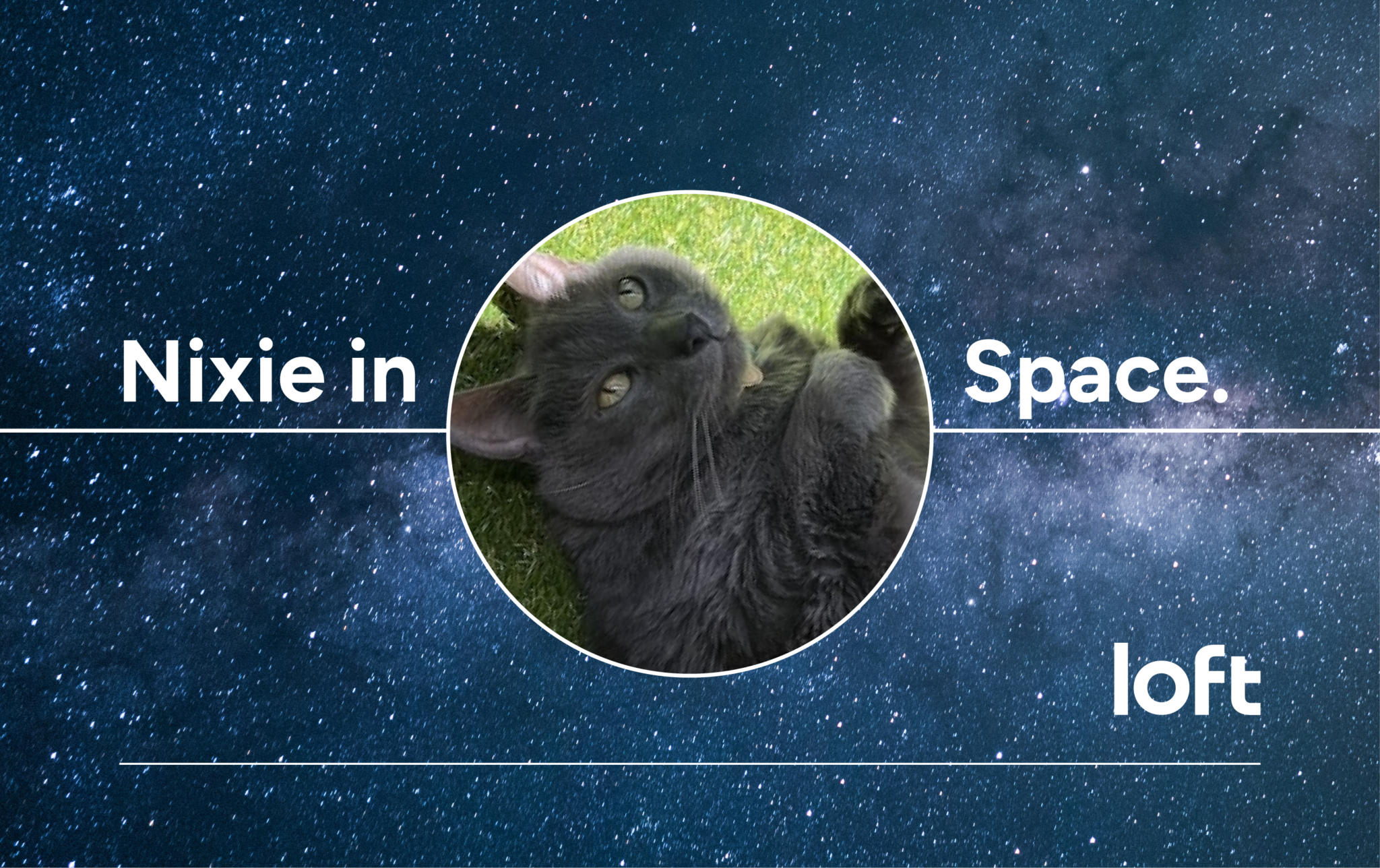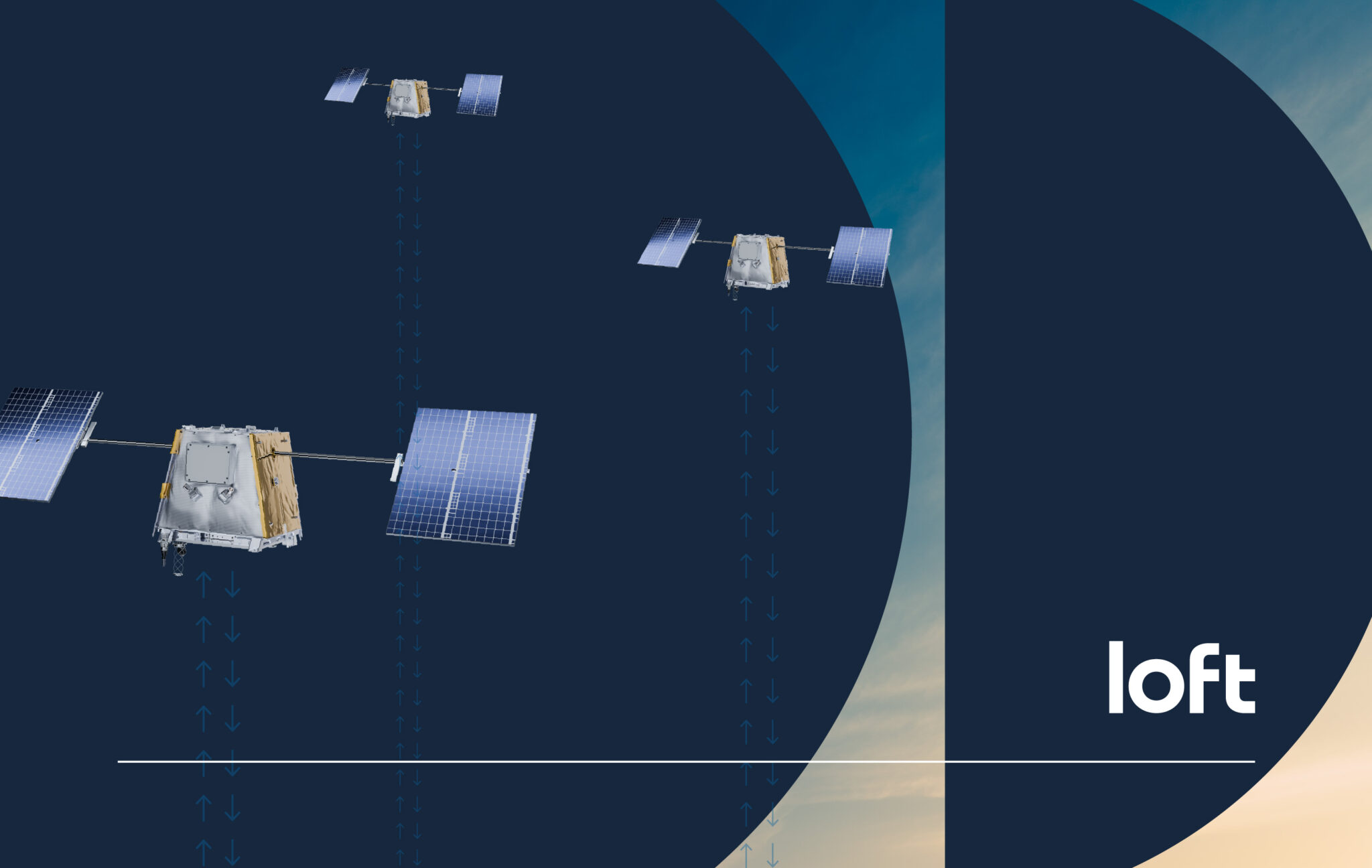At Loft, we design our space infrastructure to define, develop, and deploy missions in a simple, fast, and reliable manner.
‘Houston, we have a problem’
Over the past few years, we’ve launched and operated satellites at a speed previously unseen in the space industry.
Since 2017, we’ve accelerated our integration and launch process from a four-year timeline to the ability to launch a full constellation in 2025. We’ve advanced our onboard stack to a Linux-based system with Kubernetes clusters in orbit and developed a microservice-driven Mission Control System (MCS) managing multiple satellites and ground stations.
Here’s the catch: as our capabilities grow, so does our data volume. Traditional telemetry and telecommand (TM/TC) systems are reliable but limited. Similar to the serial link of your server, when a problem arises these systems can serve as a safety net however, they can’t handle large-scale tasks like updating firmware or transferring container images across a fleet. A better network is no longer just a nice to have—it’s essential.
We successfully built a proven onboard IPvX network stack and launched a flight test platform dedicated to R&D. Combined with running Kubernetes clusters, this lays the foundation for scalable communication and innovation, making it the perfect candidate for a new network infrastructure.
We’re breaking the cloud border
To address these issues head-on, we embraced modern Software-Defined Networking (SDN) principles, similar to those employed in virtual private clouds1.
A flexible, hardware-agnostic SDN is key to building a scalable, cost-effective solution. Once the groundwork is established, we extend these elements back to the satellites to create a global mesh network.
These core advancements combined with our Virtual Mission offerings make Virtual Private Space as straightforward as its cloud counterparts.
Introducing SpaceVPN
SpaceVPN is our first step toward a global mesh network. It focuses on ground systems while leveraging our existing on-board capabilities. Our goal is to give customers direct payload access and provide our spacecraft with internet connectivity.
It works by routing Layer 3 (IP) packets from the spacecraft, over radio to our Mission Control System, and then to the end user. It may sound simple, but the execution has presented some interesting challenges.
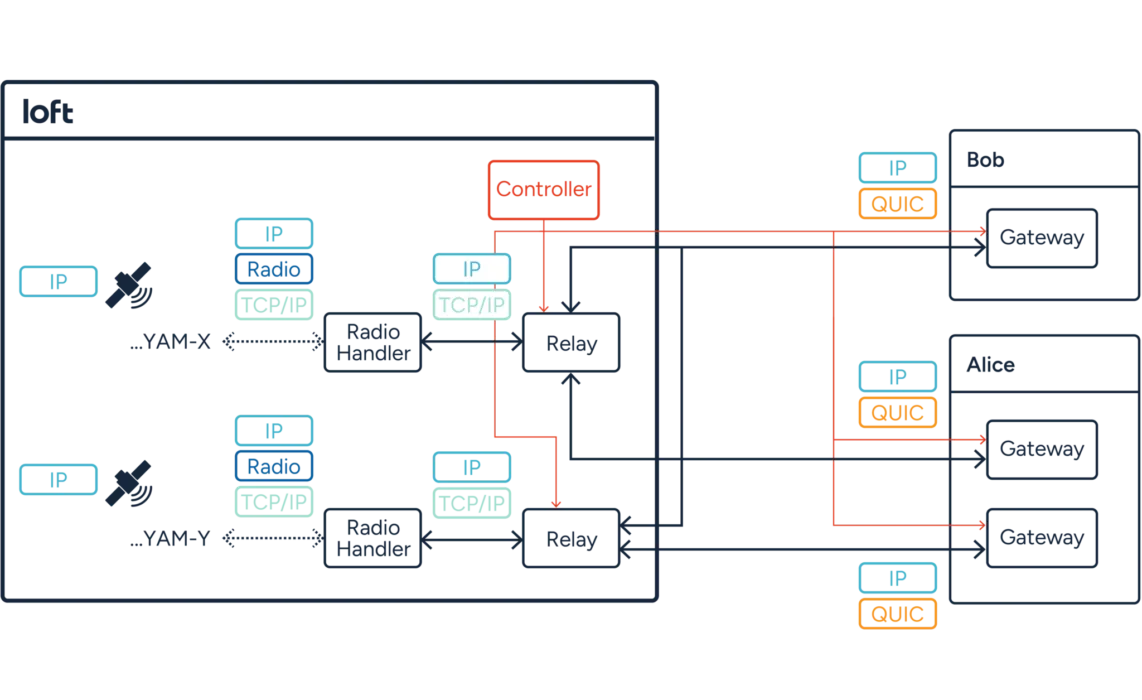
It’s all about data
In SDN, everything revolves around control- and data planes.
Control planes manage routing, firewall rules, and network behavior. Think of it as the railway signal system, where data planes move data, like the train itself focusing on speed and throughput, each with its unique priorities. The control plane prioritizes reliability over speed whereas a data plane focuses on performance and volume. By decoupling them, we enhance security, efficiency, and scalability.
For SpaceVPN, the control plane combines new tech (gRPC streams, Kubernetes) with established methods (Border Gateway Protocol (BGP) routing, iptables2). At Loft, we’re testing the data plane with QUIC, a cutting-edge protocol ideal for high-latency environments like space.
Our first success involving ground AI
Ever wondered what happens when you mix space technology with cat memes? Well, we decided to find out. We decided to beam a cat picture from space to ChatGPT to demonstrate our new technology capabilities.
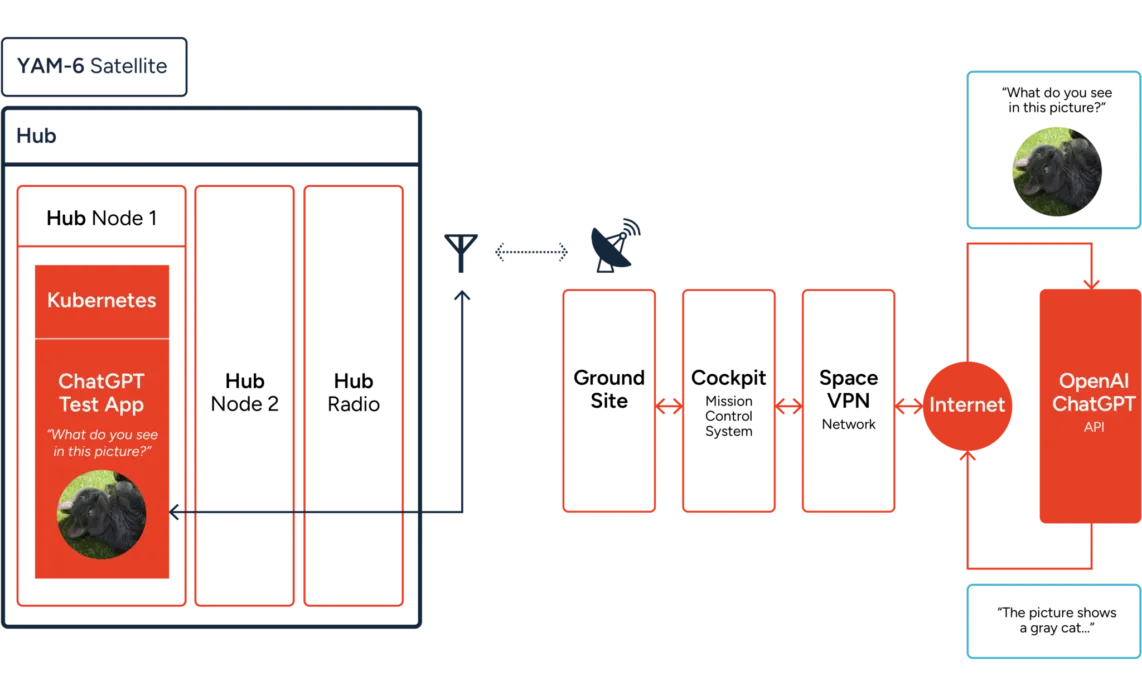
Why a cat pic? Our flight software lead Brandon snuck a picture of his cat Nixie onto our satellite before launch. Since we were itching to test our space-to-ground internet connection through our onboard Kubernetes cluster, we thought, “What better way than with a cat pic?” We created a quick Python app using OpenAI’s SDK and asked ChatGPT, “Hey, what do you see?”

The response? Spot on:
“The picture shows a gray cat lying on its back on grass. The cat is in a playful or relaxed pose, enjoying the sunlight. The grass is vibrantly green and well-lit.”
While it may seem simple, this test pushed our tech stack to the limit:
- Virtual Space Engine (Loft’s app runtime environment, over Kubernetes)
- Flight Software SDK (Loft’s flight software)
- Networking across Hub Nodes and Hub Radio (Loft’s onboard compute and networking infrastructure)
- Cockpit (Loft’s Mission Management and Control System)
- SpaceVPN
Who knows, we may just be the first humans to use AI to analyze a cat picture from space.
QUIC Words About Network Protocols
Originally developed by Google, QUIC is the backbone of HTTP/3. Designed to solve issues like head-of-line blocking in HTTP/2. QUIC provides our satellite networks with:
- Resilience: Smooth performance even with packet loss.
- Performance: Low latency and faster connection setups, a crucial component for mobile or intermittent networks.
- Security: QUIC integrates TLS encryption for built-in security, essential for privacy-critical applications like SpaceVPN. Challenges like UDP traffic throttling and resource demand mean deploying it strategically with contingency plans in place.
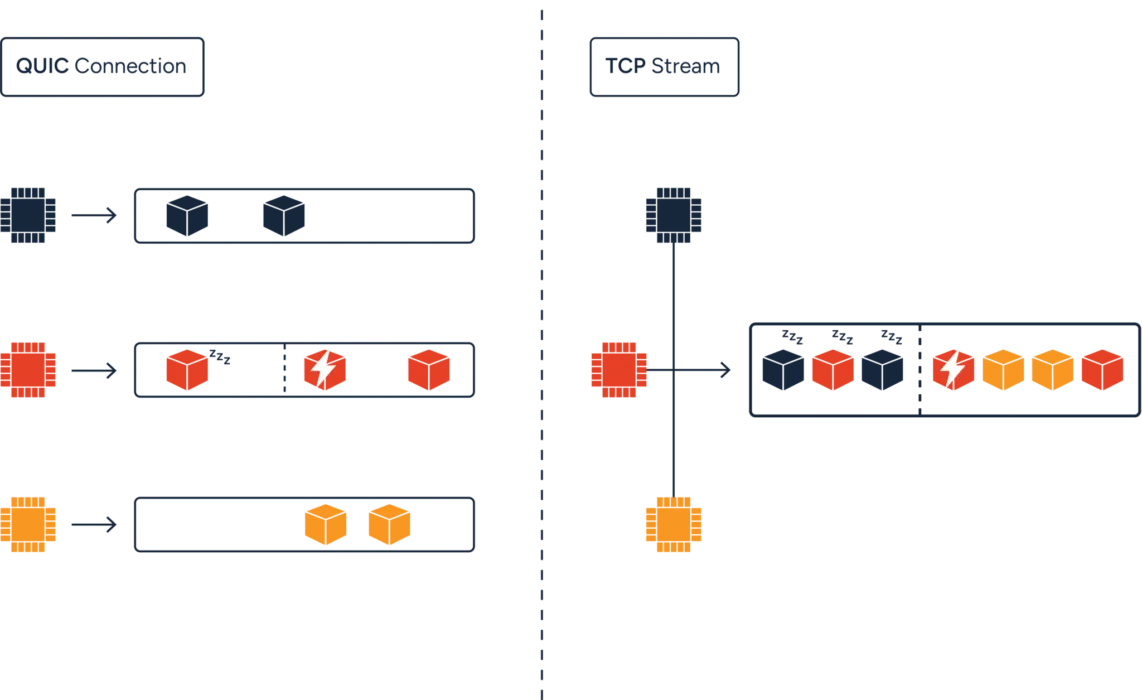
So, what’s next?
In the short term, we’re focused on testing, refining, and operationalizing SpaceVPN to ensure its robustness and efficiency. Mid-term efforts will shift toward migrating network-intensive tasks to Layer 3, unlocking new levels of performance and scalability. Long term, our sights are set on building a global meshed network layer to redefine connectivity in space.
Together, these steps pave the way for a secure, scalable, and efficient network. With innovations like QUIC, SpaceVPN is shaping a future where space infrastructure will be as reliable and accessible as today’s cloud.
If you’re interested in joining our team, visit our hiring page.
*Links:
- Virtual private clouds: VPC networks | Google Cloud, Private Cloud – Amazon Virtual Private Cloud (VPC) – AWS, Azure Virtual Network – Virtual Private Cloud | Microsoft Azure or services like Tailscale and Twingate.
- What is BGP? – BGP Routing Explained – AWS
